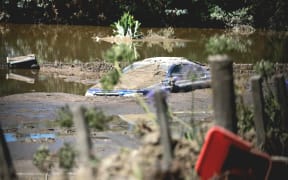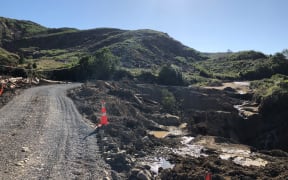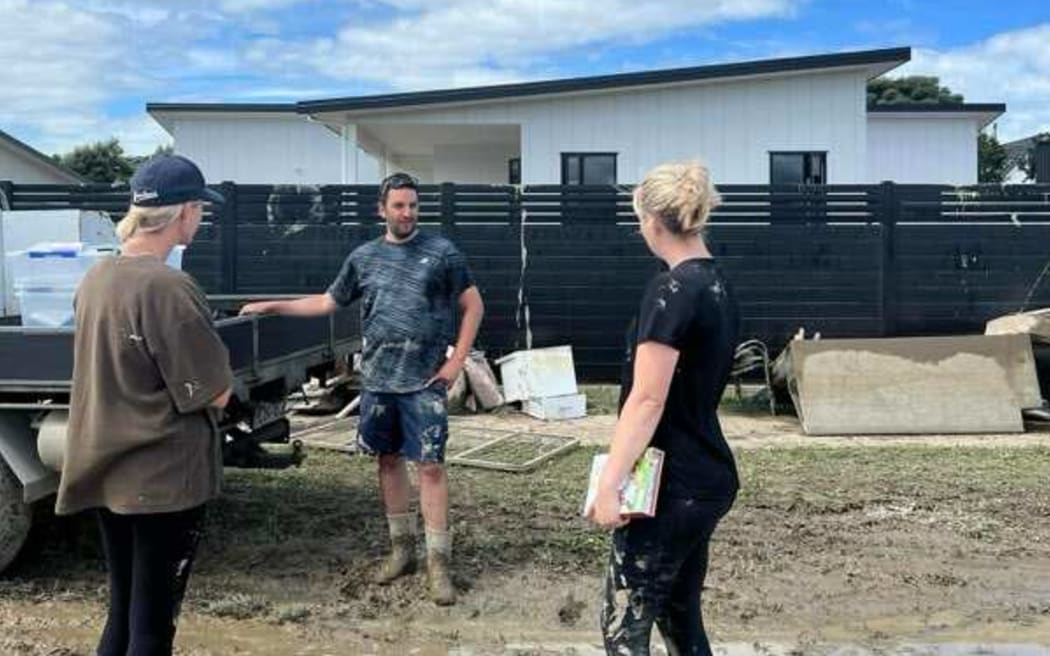
Jayde Demanser (right) and her husband Matt, with friend Bree Claudatos who helped with the clean up. Photo: Supplied / Jayde Demanser
Owners of some cyclone-wrecked Hawke's Bay homes say they are depressed, desperate, and still in the dark about whether they will ever return home.
On Tuesday, Hawke's Bay Regional Council moved 287 properties in unliveable Category 3 from a 'provisional' to 'final' status - meaning the buyouts of those homes could begin, giving owners certainty about their future.
But more than 1000 whānau in provisional Category 2 are still stuck, waiting for the council to hash out whether flood protection measures can save their homes.
"We're just getting angry, sad, depressed, desperate," said Jayde Demanser, whose Whirinaki home north of Napier is in Category 2A.
As for 2A homes, they could drop down to safe Category 1, move up to unliveable Category 3, or go sideways to Category 2C - meaning flood protection measures could protect them.
But there was "significant further assessment required" before the fate was decided.
Demanser said engineering consultants gave the regional council potential flood protection options two weeks ago.
"It's like a carrot being dangled. I just want to know, all of us want to know. We just want an answer, regardless of which way it moves to, we just want an answer so that we can move forward."
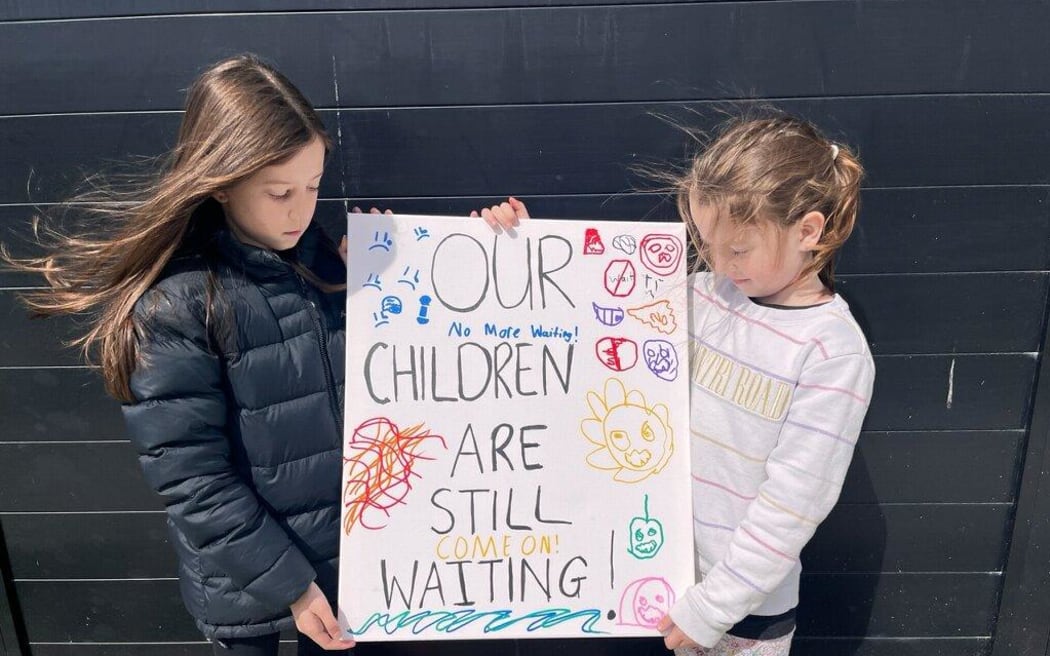
Lillie and Mia Demanser with a sign they will tie to the front gate. Photo: Supplied / Jayde Demanser
Demanser said council would not commit to a timeframe to deliver any news, which was "the hardest thing of all".
"They are giving away nothing. They're just like a black void of non-communication, we have no idea."
Swathes of Wairoa are also in 2A. While $70 million was earmarked for a flood protection scheme for the town, with no existing protection, councils were starting from scratch, so the category would not change until a design was agreed.
Michelle McIlroy's home is near the river.
Like many of her neighbours, her whānau live without basics - running hot water, for example - in a cabin on her whenua. While it had been tough, she remained pragmatic.
"I think you just have to be real, and understand that things take time. I think we've all learned incredible patience."
But until there was a plan in place to protect the community, many lived in fear.
"When it rains and we see the river rising, you get a little uneasy, there's a lot of anxiety.
"A lot of our tamariki and mokopuna are afraid of the rain."
Meanwhile, those in 2C - for homes that need community-level flood protection to protect them - had a little more certainty.
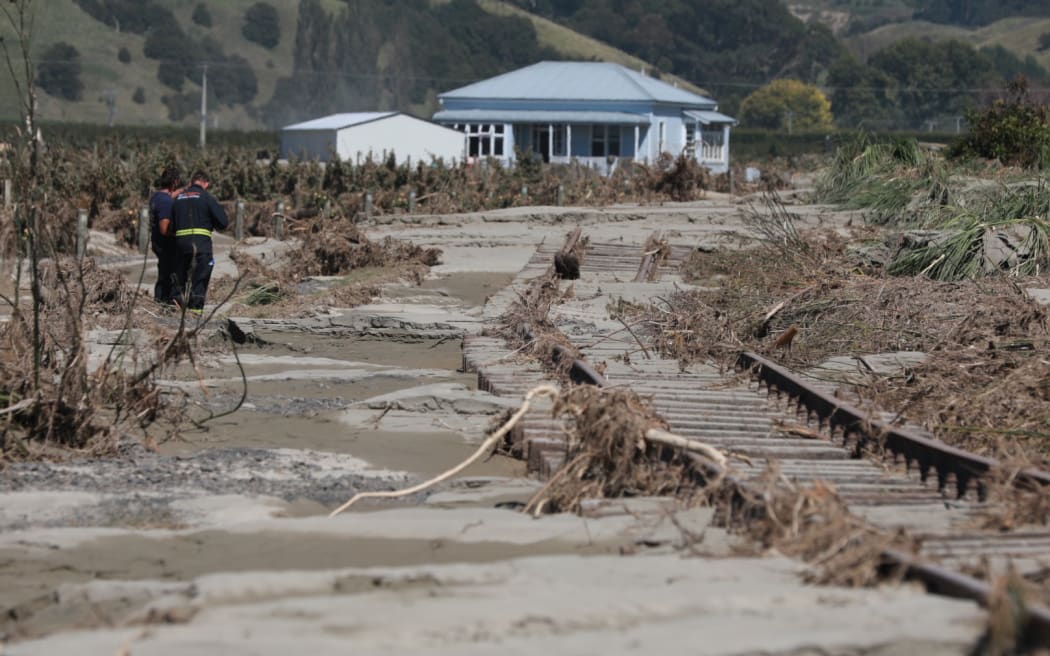
File photo. Hawke's Bay's Esk Valley following Cyclone Gabrielle. Photo: RNZ/ Nick Monro
Deidre Jones and her whānau were still living at Waipatu Marae while they worked on repairing her family's papakāinga in Waiohiki.
"We've been told that they are going to build the flood banks up behind us, [but] when that's going to happen I'm not too sure.
"My understanding is once those flood banks are put in place, then we drop down a category which is better really, but it's just a waiting game."
Jones said she never thought she would be out of her home for so long. It was the little things they missed.
"My daughter's said to me, 'mum I can't wait to have my own room and be able to shut the door, and have a bit of privacy'."
'A complicated job' - regional council

Hawke's Bay Regional Council chief executive Dr Nic Peet could not say when communities could expect information. Photo: Supplied / Hawke's Bay Regional Council
As of Tuesday, 882 properties were in 2A, 149 were in 2C, and nine were 2P - meaning changes must be made to the property itself, like raising it or improving drainage.
Hawke's Bay Regional Council chief executive Dr Nic Peet said engineers were coming up with options to present to residents as fast as they could.
But it was a massive undertaking, dealing with a huge volume and variety of situations.
"Absolutely appreciate it's hard for those people, they're still in limbo," Peet said.
"But what we're really committed to do is working with them to find a mitigation that's going to work, and that's quite a complicated job."
Peet could not say when communities could expect information.
But he said the council had taken on more staff to communicate with them, even if the news is that, for now, there is still no news.

